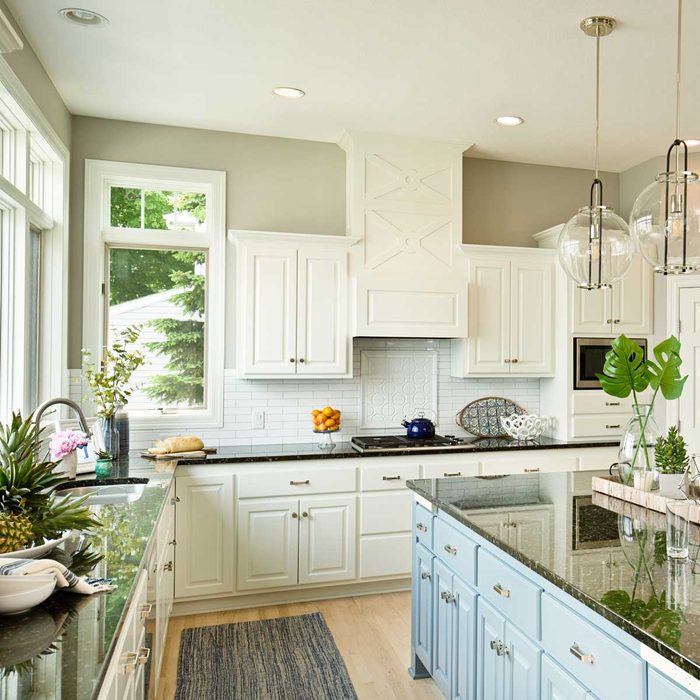
How To Have an Easier Kitchen Remodel
Embarking on a kitchen remodel is both exciting and nerve-racking. To make it slightly less stressful, we asked kitchen pros for ideas about how to make the process easier, less expensive and more successful. Check out this collection of great tips for turning your kitchen remodel into a journey that ends with the kitchen of your dreams!
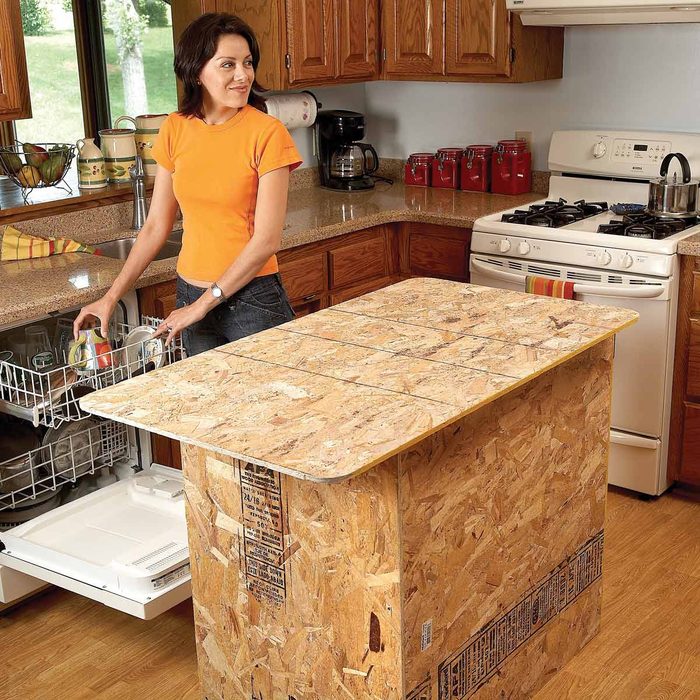
Try an Island Before You Buy
If you want more counter and storage space, then adding a kitchen island may be worth the cost. But an island can limit the number of people working in the kitchen, reduce traffic flow to one-way with no passing and make for cramped quarters. Try out an island before committing to one. Slap together a full-scale model out of cardboard or plywood and live with it for a few days. Make sure you can open your stove and refrigerator doors. No space for an island? Consider a kitchen trolley instead.
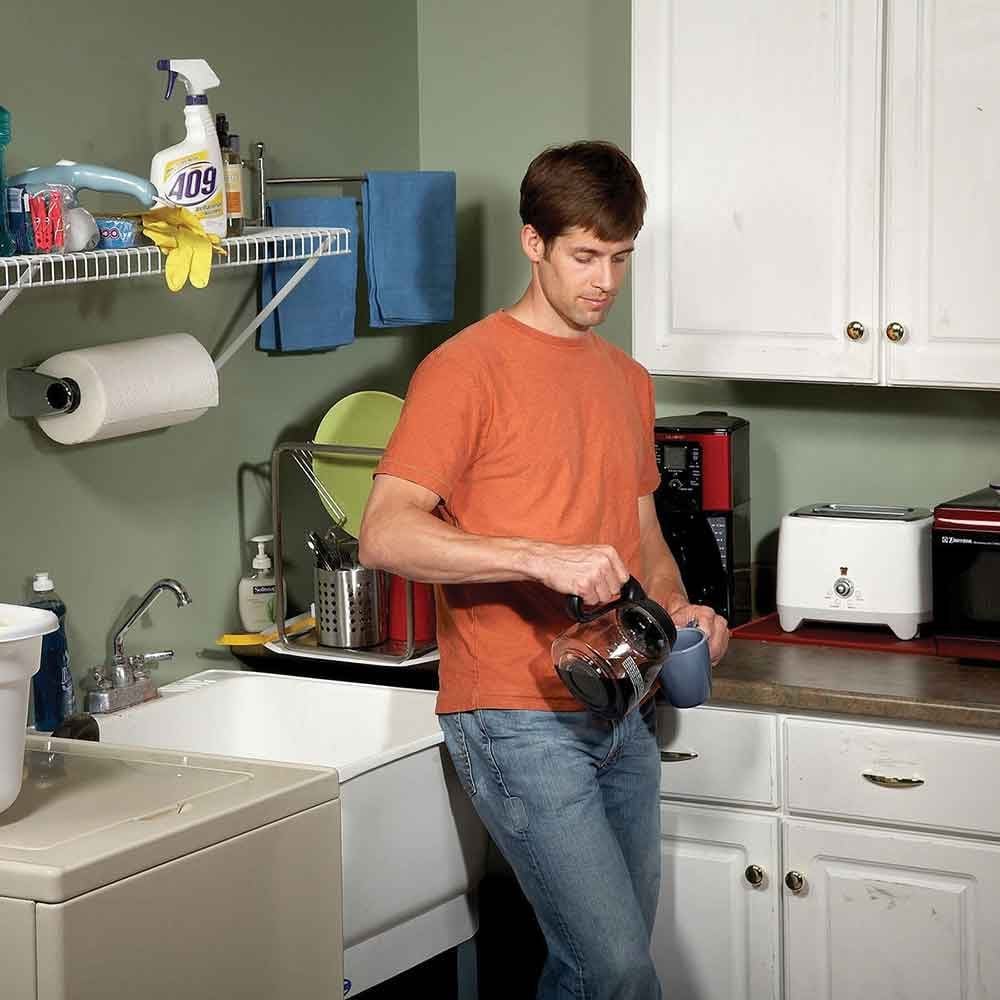
Set Up a Temporary Kitchen
A temporary kitchen lets you cook, wash dishes and make your morning coffee while your main kitchen is out of commission. Save a few of your old cabinets and countertops to build the makeshift kitchen. You don’t need a fancy setup —functionality is the goal here. Install the cabinets and cut the countertop to fit, if necessary. Then add the countertop appliances and other items you need for preparing meals, like a toaster oven, hot plate, microwave, coffeemaker and refrigerator (even a half-size model would be great).
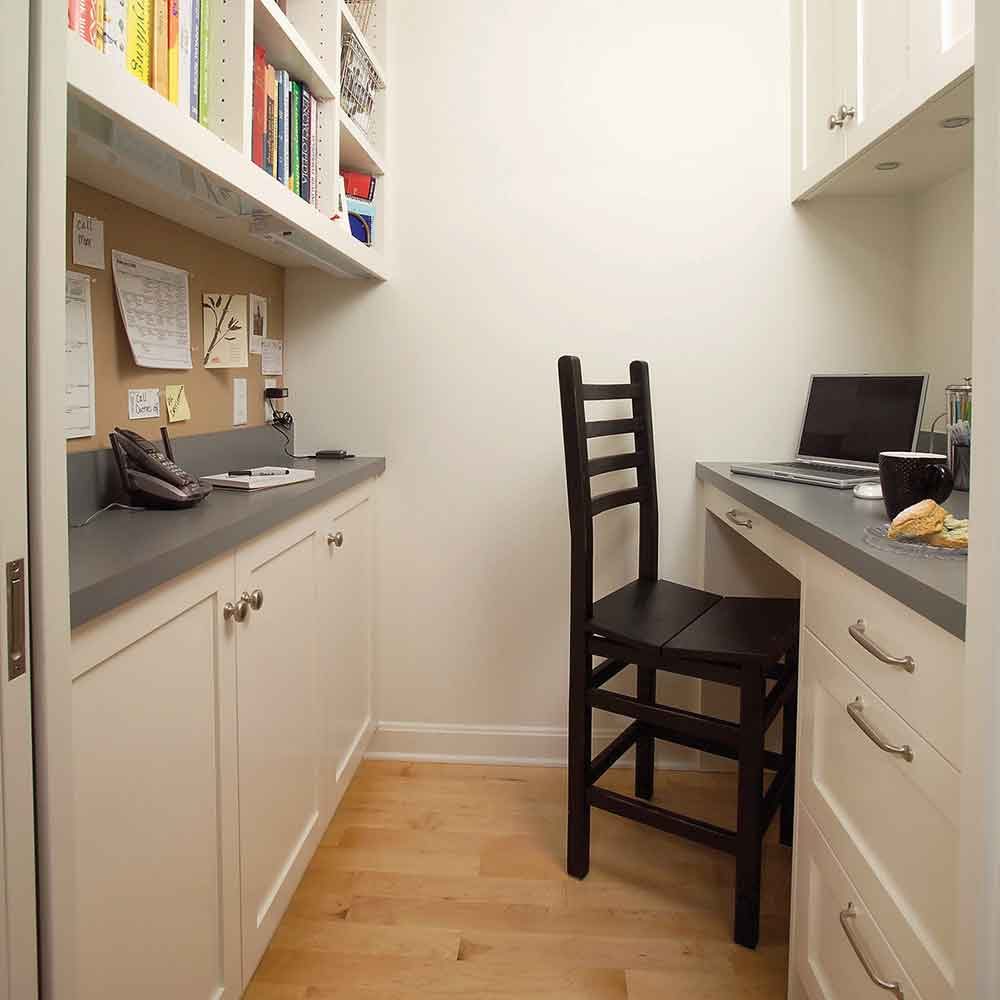
Build an Office Into Your Kitchen Remodel
If you want to use your kitchen as an office, make it part of the remodel. You don’t need a lot of space. A small seating area with a computer station is often adequate. During the remodel, add outlets for plugging in your computer equipment. Also add storage space like shelving or a recessed wall cabinet so your paperwork won’t get lost or create a mess.

Leave Space for Future Kitchen Remodels and Appliances
If you’re getting new cabinets but want to keep your old refrigerator, leave enough space between cabinets so you can replace your fridge with a wider model later. (Most refrigerators are 32 to 36 in. wide.) Install filler strips or panels to fill up the extra space. You can install shelving between the panels over the top of the fridge or install top cabinets. Order the filler strips and panels with your cabinets so they match.
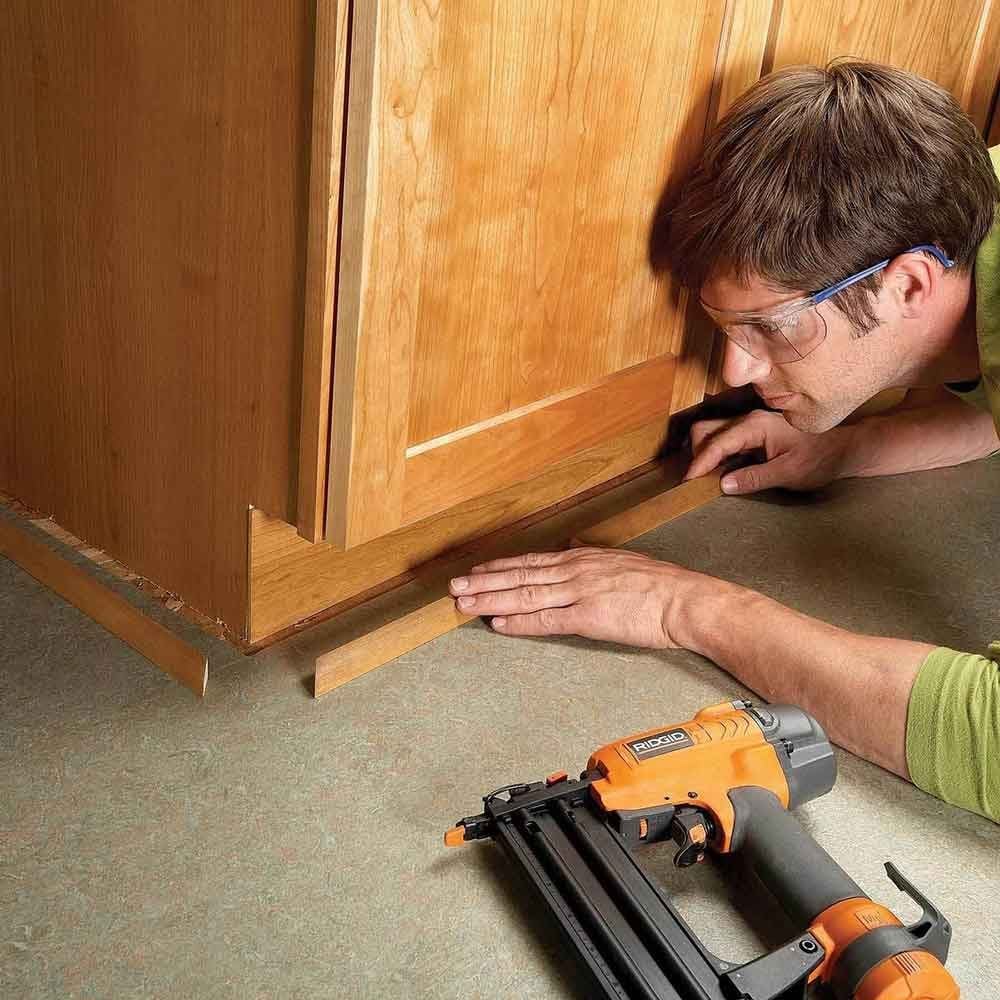
Watch Out for Floor Gaps
If you’re keeping your existing floor and replacing your cabinets, you may have to deal with gaps between the old floor and the new cabinets. Base cabinets are usually 24 in. deep, but toe-kick depths vary. Cabinet widths run in 3-in. increments from 6 in. to 48 in. If the new cabinets don’t fit the existing cabinet footprint, you’ll be left with gaps. Be sure the total width of the new cabinets matches the overall width of the ones you’re replacing. Hide gaps smaller than 3/4 in. with molding.
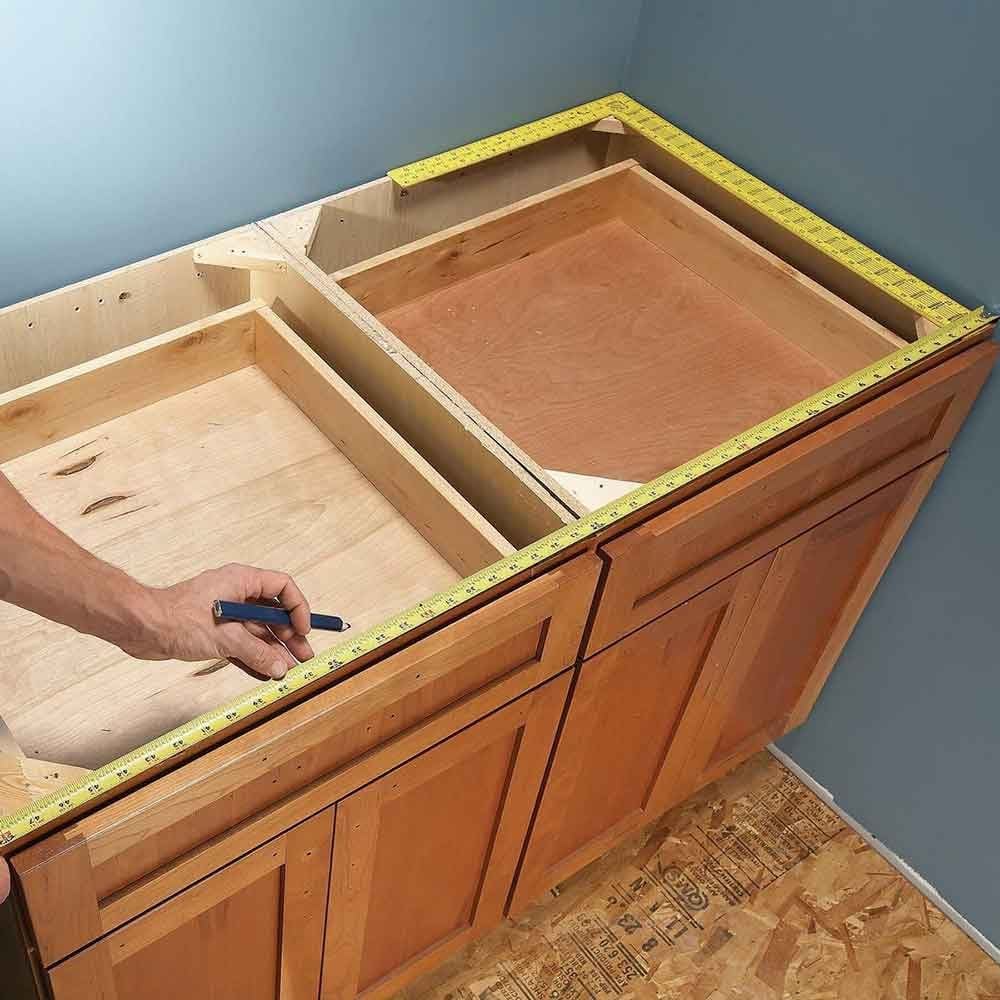
Order Countertops After the Cabinets Are In
Measure your installed base cabinets to determine the countertop dimensions—don’t use the ones on your plans. The row of cabinets may have a different dimension after installation due to out-of-square walls. Place a carpenter’s square in the corner over the end cabinet. The corner might be narrower than the rest of the wall because of layers of joint compound. Measure to the farthest point on the wall over the cabinets to avoid an ugly gap between the countertop and the wall after the countertops are installed.
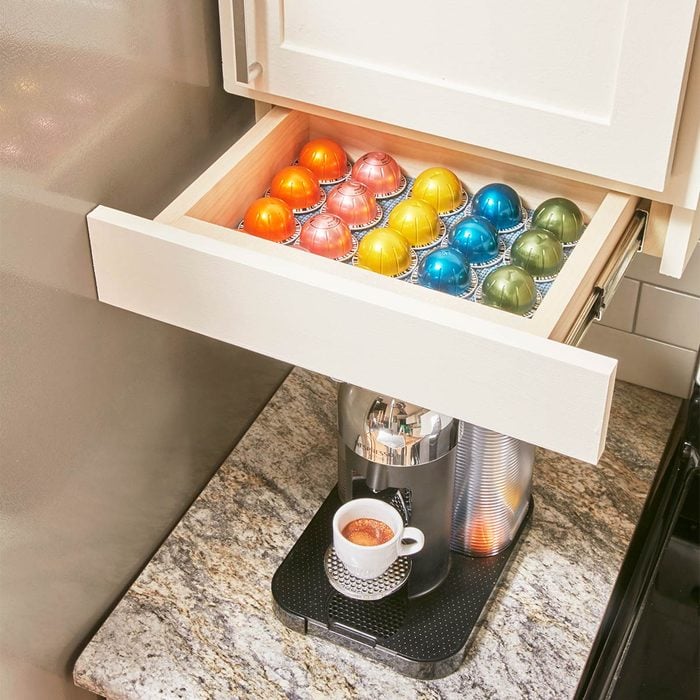
Install Storage Under Cabinets
Pull-down racks and under-cabinet drawers give you instant access to kitchen essentials without the clutter of spice racks or knife holders. When the cooking is done, the rack swings up against the underside of the cabinet. You can buy ready-made racks or buy a pair of hinges and make your own wooden rack to hold knives, spices or other small items that take up kitchen counter space.
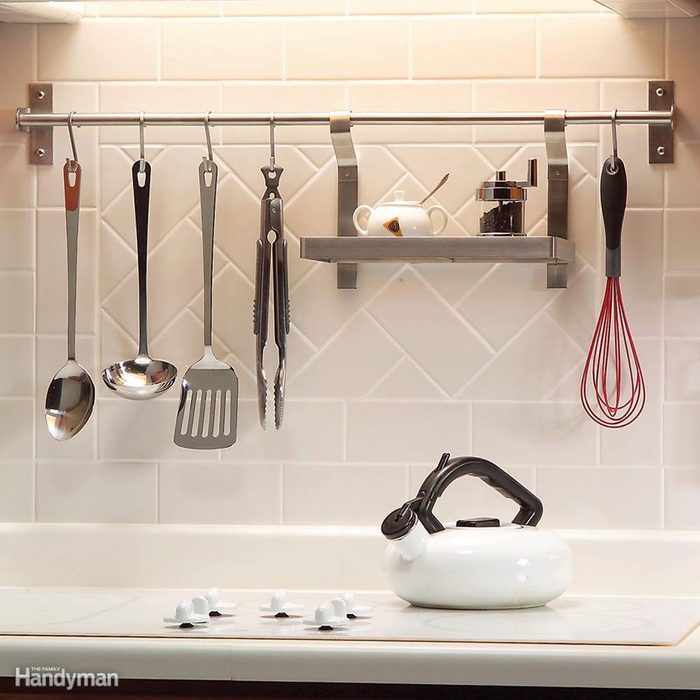
Take Advantage of Unused Storage Space
Backsplash racks offer easy access and stylish storage. Most versions take just a few minutes to install. You’ll also find a range of prices (up to $60 per foot!). The stainless steel wall organizer shown here cost about $3 per foot, and add-on shelves and bins range are also available.